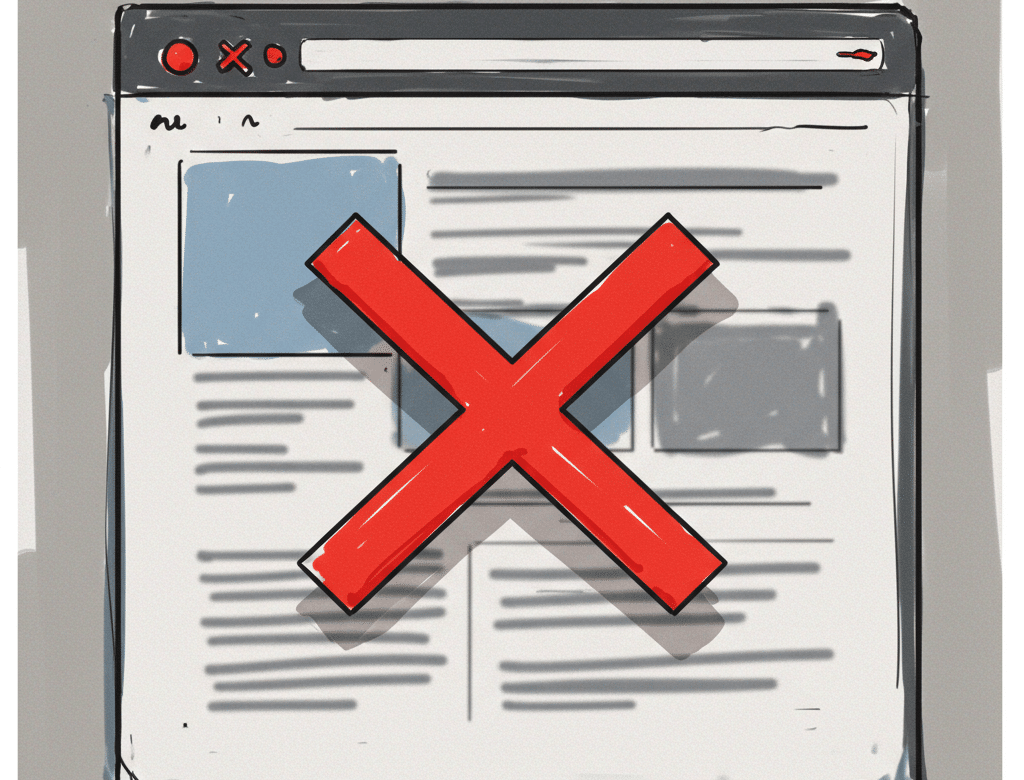Dijital Pazarlama Metrikleri Nedir?
Günümüz tüm sektörlerde ayakta kalmanın yüksek rekabette ayakta kalmayı gerektirdiğinden dijital pazarlama, her geçen gün daha önemli hale geliyor ve başarıya ulaşmanın sırrı, verileri doğru bir şekilde analiz etmekten geçiyor. Dijital pazarlama metrikleri, online kampanyalarınızın performansını ölçmek ve geliştirmek için kullanılan bu verilerin nicel göstergeleridir. Platformlar tarafından sağlanan bu verileri anlamak ve etkili bir şekilde kullanmak, stratejilerinizi optimize etmenizi ve işinizin başarısını artırmanızı sağlar. Bu yazıda, dijital pazarlamanın temel metriklerini ele alacak ve her birinin işinize nasıl değer katabileceğini anlatmaya gayret edeceğim.
Ziyaretçi Sayısı (Visitors)
Ziyaretçi sayısı, kısaca web sitenizin ne kadar popüler olduğunu olduğunu gösterir. Yani kaç kişinin sitenizi ziyaret ettiğini, sitenize olan ilgiyi ölçer ve bu sayede pazarlama stratejinizin etkinliğini değerlendirmenizi sağlar. Ziyaretçi sayısındaki artış genellikle başarılı bir pazarlama kampanyası anlamına gelir. Ancak unutmamak gerekir ki tek başına ziyaretçi sayısı bir anlam ifade etmez. Sitenize gelen kullanıcıların aktiviteleri (sitenizde kalma ve gezinme süreleri) gibi diğer veriler de göz önünde bulundurulmalıdır.
Trafik Kaynağı (Traffic Source)
Kullanıcıların sitenize hangi kaynaktan geldiklerini gösterir. Sitenize gelen kullanıcıların e-posta, organik arama motoru sonuç sayfası, direkt link, sosyal medya veya Google Ads gibi kaynakları içeren bu veri, her ne kadar göz ardı edilse de çok önemlidir çünkü pazarlama yatırımlarınızı hangi kaynağa odaklayacağınız konusunda fikir verir. Örnek vermek gerekirse; sosyal medyadan gelen trafiğiniz yüksekse, bu trafik kaynağına yatırım yapmak isteyebilirsiniz.
Görüntülenme (Impressions)
Görüntülenme sayısı, içeriğinizin veya reklamınızın kaç kez kullanıcılara gösterildiğini ifade eder. Bu metrik kampanyalarınızın aktifliği konusunda önemli fikirler verir. Bu metrik marka farkındalığınızı artırmak için oldukça önemlidir. Ancak yüksek görüntülenme sayısı her zaman başarılı bir kampanyanın göstergesi değildir. Bu nedenle görüntülenmelerin, tıklama veya dönüşüme dönüşüp dönüşmediğini izlemek önemlidir.
Tıklama (Clicks)
Tıklama sayısı içeriğinize veya reklamınıza kaç kere tıklandığını gösterir, başka bir deyişle; reklamınıza veya içeriğinize ne kadar ilgi gösterildiğini gösterir de diyebiliiriz. Tabi her zaman iyi tarafından bakmamalıyız. Yüksek tıklama sayımız olabilir ancak bu tıklamaların satın almaya ya da herhangi bir dönüşüme dönüşüp dönüşmediğine de bakmalıyız. Dolayısıyla tıklamaları, dönüşüm oranlarıyla birlikte izlemek, kampanyalarınızın etkinliğini daha isabetli şekilde izlemenizi sağlar.
Tıklama Oranı (CTR)

Tıklama Oranı; tıklama sayınızın, görüntülenme sayınıza oranıdır. Reklamınızın ne kadar dikkat çekici olduğunu ve kullanıcıların isteklerine uygunluğunu gösterir. Düşük tıklanma oranı demek reklamınızın görüntülendiği ancak kullanıcıların reklamınızı ilgi çekici bulmadığı ve tıklamadığı anlamına gelmektedir. Bu oranı artırmak için reklamınıza daha fazla uzantı ekleyebilir, başlıkları, görselleri ve metinleri optimize edebilirsiniz. CTR’ı sadece reklamınızın başarısı olarak görmek yanlıştır aynı zamanda sizin, kullanıcıların ilgisini ne kadar çektiğinizin ölçütüdür.
Maliyet (Cost)
Maliyet, reklam kampanyalarınız için harcadığınız toplam tutardır. Bu metriği izleyerek, dijital pazarlama bütçenizi ne kadar verimli kullandığınızı görebilirsiniz. Maliyetinizi düşük tutarak getirinizi artırmak kampanyalarınızın başarısı için kritik öneme sahiptir. Bu nedenle, maliyetlerinizi diğer metriklerle karşılaştırarak, harcamalarınızı optimize edebilirsiniz.
Tıklama Başına Maliyet (CPC)

Tıklama başına maliyet (CPC), reklamınıza yapılan her bir tıklamanın size maliyetini gösterir, Düşük bir CPC, daha fazla tıklama almanızı sağlar ve bütçenizi daha etkili bir şekilde kullanmanıza yardımcı olabilir ancak aynı zamanda düşük bir CPC, kullandığınız anahtar kelimede rakiplerinizin olmadığını gösterir ve bu kullandığınız anahtar kelimede ya rakiplerinizin farketmediği bir hazine yatmakta demek ya da rakipleriniz kullandığınız anahtar kelimenin onlara bir getirisi olmadığının farkındadır demektir. CPC’yi optimize etmek için hedeflemeyi ve anahtar kelimeleri dikkatlice seçmek önemlidir.
Bin Gösterim Başına Maliyet (CPM)

Reklamınızın bin kez görüntülenmesi için ödediğiniz tutarı ifade eder. CPM, genel olarak marka bilinirliğini artırmayı hedefleyen kampanyalar için önemli bir metriktir. Gün sonunda markanızı daha çok kişinin bilmesi için, reklamınızı daha çok kişinin görmesinin yanında akılda kalıcı da olması gerekir.
Dönüşüm Sayısı (Conversions)
Dönüşüm sayısı, kampanyalarınızın, kullanıcıların ne kadarını siteye çekebildiğinin ve daha sorasında sitenizde bu kullanıcıların, istedikleri bilgileri ne kadarını verebildiğinizi gösteren metriklerden birisidir. Ancak yine de belirtmekte fayda var; yüksek dönüşüm sayıları, pazarlama stratejinizin hedef kitleniz üzerinde etkili olduğunu gösterir ancak dönüşüm maliyeti ve dönüşüm değerini incelemeden sadece dönüşüm sayısına bakmak kampanyanızın zararla sonuçlanması gibi durumlara sebep olabilir.
Dönüşüm Değeri (Conversion Value)
Dönüşüm Değeri, bir dönüşüm gerçekleştiğinde elde edilen finansal kazancı ölçer. Bu metrik, bir müşteri veya potansiyel müşterinin gerçekleştirdiği işlemin toplam değerini gösterir. Örneğin, bir ürünün satışından elde edilen gelir, dönüşüm değeri olarak hesaplanır. Dönüşüm değerini analiz ederek, kampanyalarınızın finansal performansını değerlendirebilir ve hangi stratejilerin daha yüksek değerli dönüşümler sağladığını belirleyebilirsiniz. Bu veri, ROI hesaplamalarında ve bütçenizi optimize etmede önemli bir rol oynar. Dönüşüm değerini artırmak için hedef kitle analizi ve stratejik kampanya yönetimi önemlidir.
Dönüşüm Oranı (Conversion Rate)

Dönüşüm oranı, reklamınıza tıklayan, sitenizi ziyaret eden kullanıcıların dönüşüm olarak hedeflediğiniz eylemi gerçekleştirme oranıdır. Dönüşüm eylemi bir satış, form gönderimi veya telefon araması gibi hedefler olabilir. Kampanyalarınızın ne kadar etkili olduğunu gösteren en etkili metriklerden birisidir. Dönüşüm oranınızı artırmak için sayfa optimizasyonuna, kullanıcı deneyimi(UX) gibi unsurlara dikkat etmelisiniz.
Dönüşüm Başına Maliyet (CPA)

Dönüşüm başına maliyet (CPA), bir dönüşümü elde etmek için harcadığınız tutardır. CPA metriğini izleyerek, pazarlama harcamalarınızın ne kadar verimli olduğunu görebilir ve bütçenizi optimize edebilirsiniz. CPA metriğini düşük tutmak, maliyetleri azaltırken dönüşüm sayısını artırmanın anahtarıdır.
Potansiyel Müşteri Sayısı (Leads)
Pazarlama kampanyalarınızın kaç kişiyi potansiyel müşteriye dönüştürdüğünü gösterir. Bu metrik, satış ekibinizin ne kadar başarılı olabileceğini ve satışa dönüşme olasılığı yüksek olan aday müşteri sayısını tahmin etmenizi sağlar. Potansiyel müşteri sayısını artırmak için hedeflediğiniz kitlenin özellikleri (ilgi alanları, yaş aralığı, konumu vb..) önemlidir. Doğru hedefleme ile potansiyel müşteri sayınızı artırabilir ve sonrasında bu potansiyel müşterileri, müşteriniz haline getirebilirsiniz.
Potansiyel Müşteri Başına Maliyet

Bir potansiyel müşteri elde etmek için harcadığınız tutarı gösterir. Bir potansiyel müşteri elde etmek için harcadığınız tutarı azaltmak için kalite skorunuzu yükseltecek optimizasyonlarda bulunabilirsiniz. Kalite skorunuzun azalmasıyla Google’ın yapay zeka algoritması reklamlarınızı daha az maliyetle yapmanızı sağlayacak ve buna bağlı olarak potansiyel müşteri başına maliyetinizin azalacaktır.
Video Görüntülenme Sayısı (Video Views)
Bu metrik videonuzun kaç kez izlendiğini gösterir. Bu metrik; reklamlarınızın kullanıcının ilgisini ne kadar çektiğini görmemizi sağlar. Video görüntülenme sayısının artması, reklamımızın daha çok kullanıcıya ulaştığını gösterirken aynı zamanda potansiyel müşteri edinimini de artırabilir.
Görüntülenme Başına Maliyet (CPV)

Görüntülenme başına maliyet metriği, bir video görüntülenmesi başına ödediğiniz tutarı gösterir. Bu metrik, video reklamlarınızın ne kadar maliyetli olduğunu görmenizi sağlar. Daha önce başka bir başlıkta bahsettiğim üzere kalite skorumuzu yükseltecek çalışmalar yaparak açık artırmaları daha az maliyetle kazanarak reklamınızın Google tarafından gösterilmesini sağlayabilirsiniz.
Yatırım Getirisi (ROI)

ROI, bir yatırımın size sağladığı finansal kazancı ölçen bir metriktir. ROI, yaptığınız yatırımların size kâr veya zarar olarak geri dönüşünü ifade eder ve kampanyalarınızın genel verimliliğini değerlendirmenizi sağlar. Yüksek bir ROI, yapılan yatırımların etkili olduğunu, size kâr getirdiğini ve işinizin finansal hedeflerine ulaştığını gösterir. ROI izleyerek hangi stratejilerin daha kârlı olduğunu belirleyebilir ve kaynaklarınızı daha etkili bir şekilde yönlendirebilirsiniz.
Reklam Harcaması Getirisi (ROAS)

Reklam harcaması getirisi metriği, yani ROAS, reklam harcamalarınızın getirdiği geliri ölçen bir metriktir. ROAS, reklam harcamalarına karşılık elde edilen gelirle hesaplanır ve reklam kampanyalarınızın maliyet etkinliğini değerlendirmenizi yardımcı olur. Her ₺1 reklam harcaması karşılığı için kaç ₺ gelir elde ettiğinizi ölçmek için kullanırsınız. Yüksek bir ROAS reklam getirilerinizin ve performansınızın iyi olduğunu belirtir.
Özetlemek Gerekirse…
Dijital pazarlama metrikleri sadece kampanyalarınızın performansını izlemek için değil, aynı zamanda işinizin büyümesi için stratejik kararlar almanıza da olanak tanır. Bu metrikler sayesinde, hangi alanlarda başarılı olduğunuzu, hangi alanlarda iyileştirme yapmanız gerektiğini anlayabilir ve pazarlama yatırımlarınızı en verimli şekilde yönlendirebilirsiniz. Unutmayın, bu veriler sadece rakamlardan ibaret değil; işinizin geleceğini şekillendirebilecek güçlü araçlardır. Metriklerinizi doğru analiz ederek, rekabet avantajınızı sürdürebilir ve hedeflerinize daha hızlı ulaşabilirsiniz. Sürekli olarak verilerinizi izlemeye ve stratejinizi optimize etmeye devam edin; bu, dijital dünyada başarılı olmanın anahtarıdır. Dijital pazarlama metrikleri hakkında detaylı blog içerikleri yazmaya devam edeceğim. Bu sırada merak ettiğiniz tüm konuları aşağıdaki yorum bölümünden bana sorabilirsiniz.




